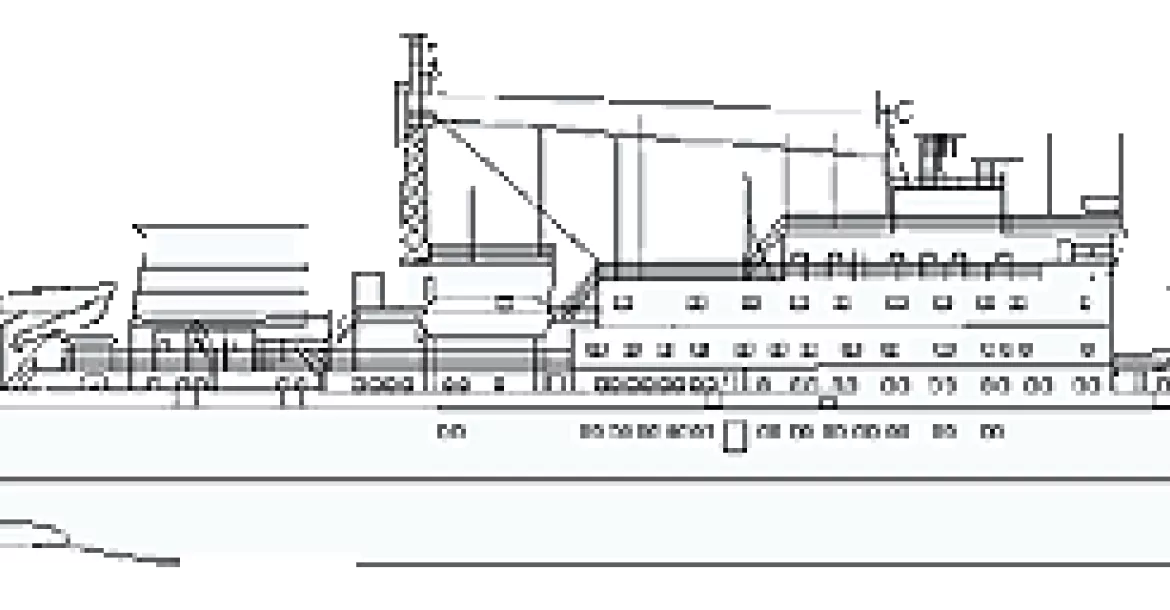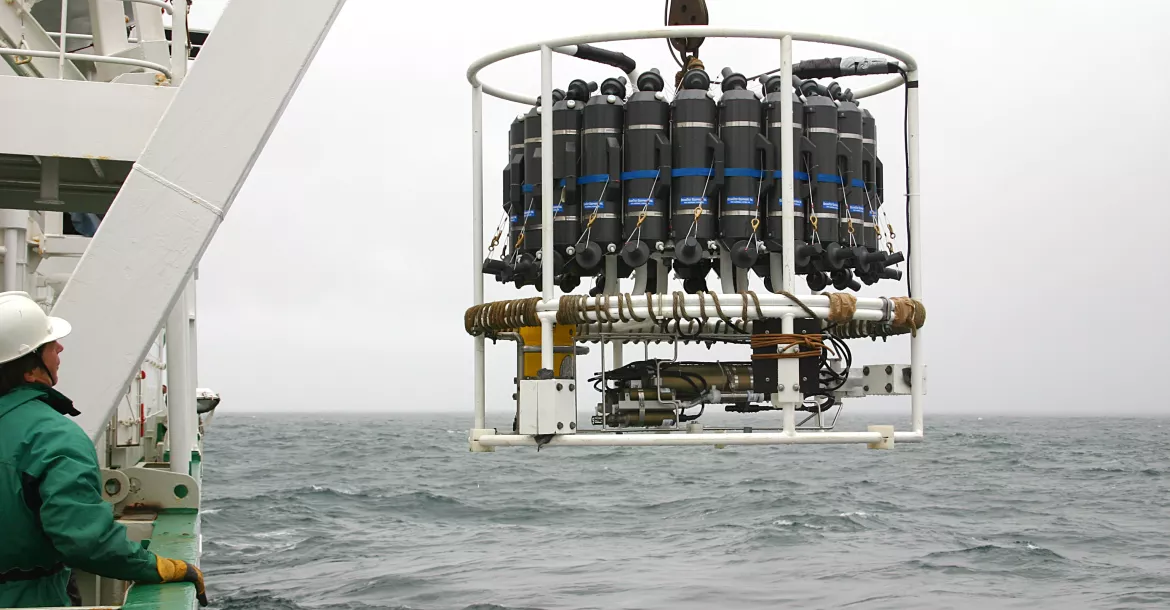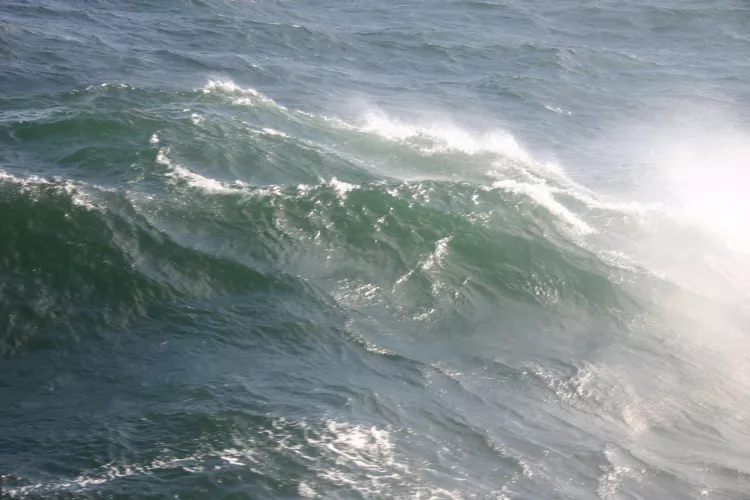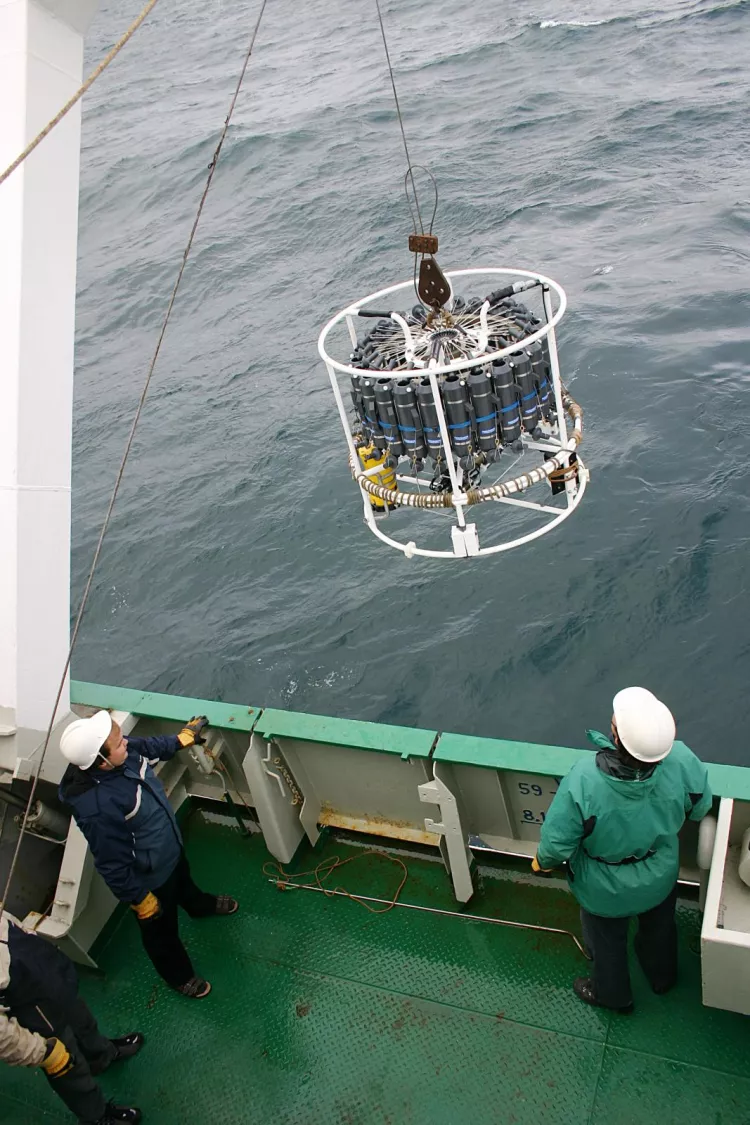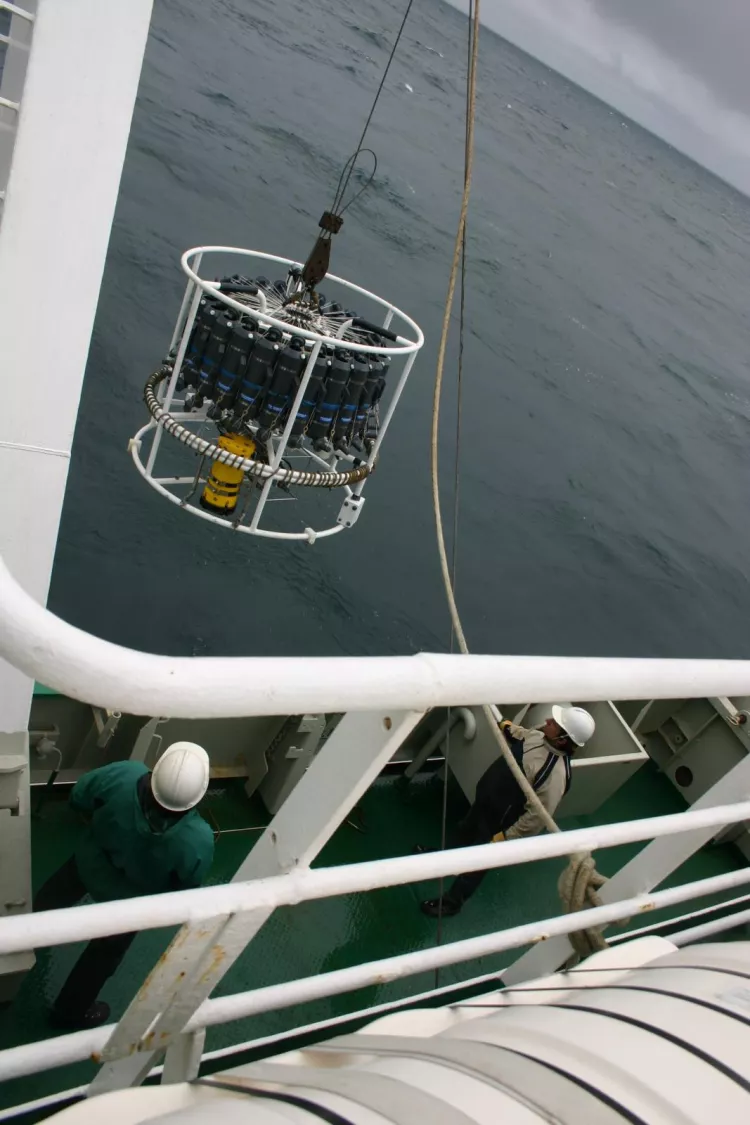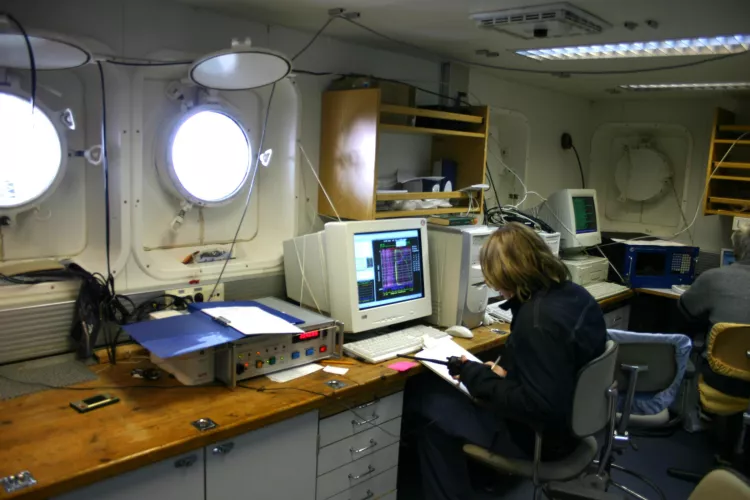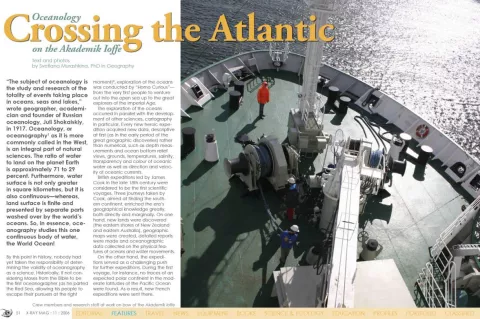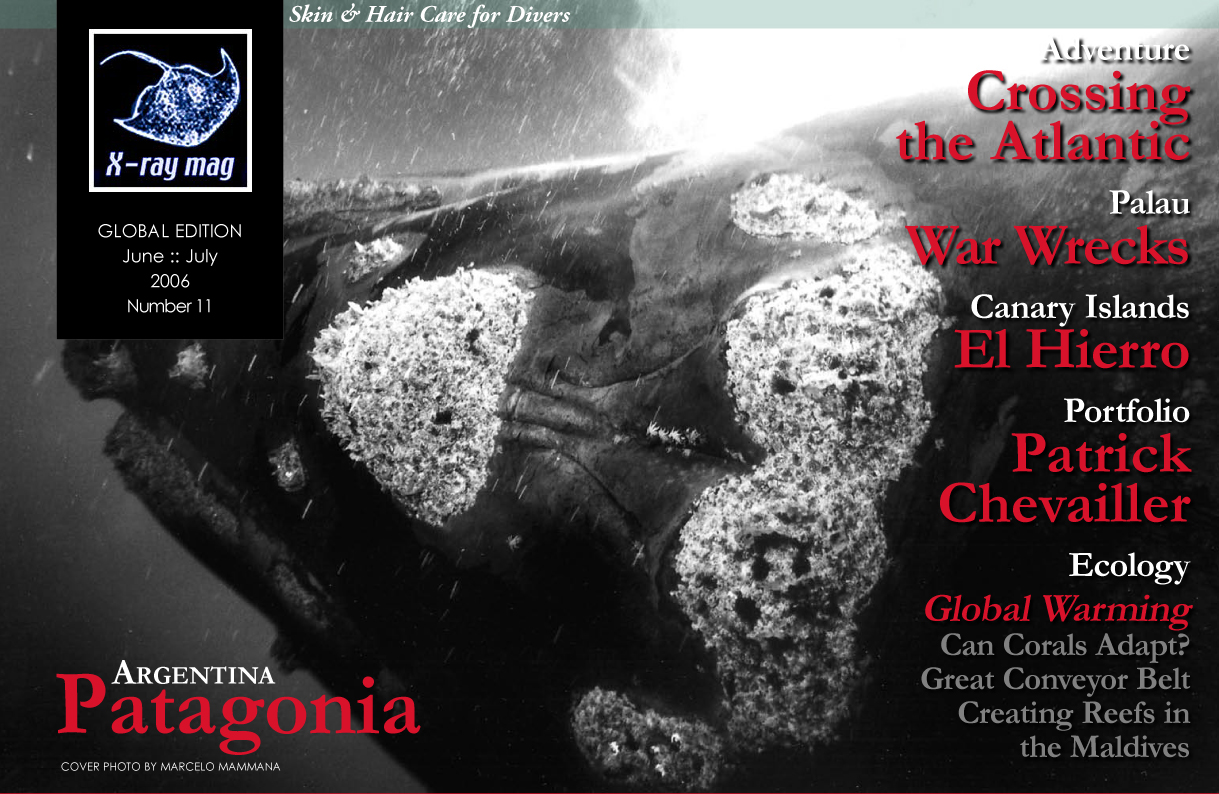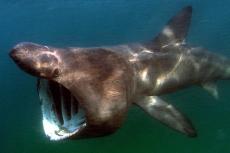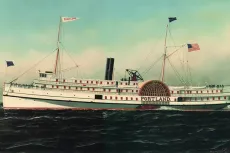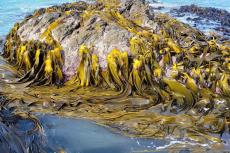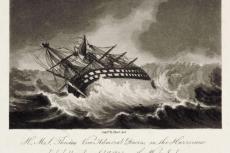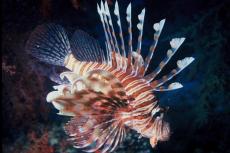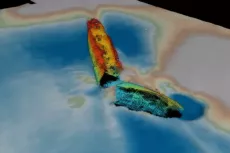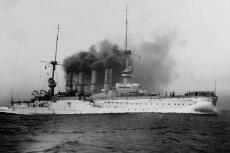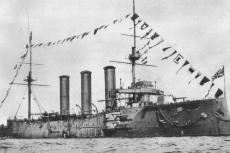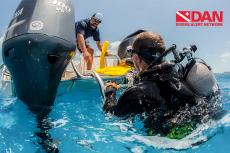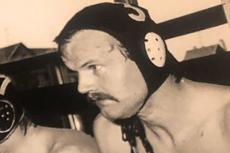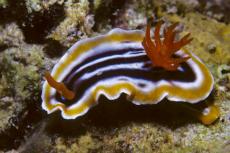
Crossing the Altantic
“The subject of oceanology is the study and research of the totality of events taking place in oceans, seas and lakes,” wrote geographer, academician and founder of Russian oceanology, Juli Shokalskiy, in 1917. Oceanology, or oceanography1 as it is more commonly called in the West, is an integral part of natural sciences. The ratio of water to land on the planet Earth is approximately 71 to 29 percent. Furthermore, water surface is not only greater in square kilometres, but it is also continuous—whereas, land surface is finite and presented by separate parts washed over by the world’s oceans. So, in essence, oceanography studies this one continuous body of water, the World Ocean!
Contributed by
By this point in history, nobody had yet taken the responsibility of determining the validity of oceanography as a science. Historically, if not considering Moses from the Bible to be the first oceanographer (as he parted the Red Sea, allowing his people to escape their pursuers at the right moment)2, exploration of the oceans was conducted by “Homo Curious”—from the very first people to venture out into the open sea up to the great explorers of the Imperial Age.
The exploration of the oceans occurred in parallel with the development of other sciences, cartography in particular. Every new heroic expedition acquired new data, descriptive at first (as in the early period of the great geographic discoveries) rather than numerical, such as depth measurements and ocean bottom relief views, grounds, temperatures, salinity, transparency and colour of oceanic water as well as direction and velocity of oceanic currents.
British expeditions led by James Cook in the late 18th century were considered to be the first scientific voyages. Three journeys taken by Cook, aimed at finding the southern continent, enriched the era’s geographical knowledge greatly, both directly and marginally. On one hand, new lands were discovered (the eastern shores of New Zealand and eastern Australia), geographic maps were created, detailed reports were made and oceanographic data collected on the physical features of oceans and water movements.
On the other hand, the expeditions served as a challenging push for further expeditions. During the first voyage, for instance, no traces of an expected polar continent in the moderate latitudes of the Pacific Ocean were found. As a result, new French expeditions were sent there. Great Britain was the first to estimate the importance and dominant position of the sea, including its scientific significance. The idea was actively accepted by France and also Russia from the beginning of the 19th century. After Cook’s enterprises and until 1872, there were 29 expeditions undertaken around the globe, 11 of which were British and eight Russian. All in all, the number of scientific marine expeditions during that period amounted to 75.
The first round-the-globe trip by Russian sailors was made on board the ships Nadezhda and Neva in 1803-1806 under the leadership of Lieutenant Captain Ivan Kruzenshtern. The expedition ships parted company after rounding Cape Horn. Nadezhda turned to Kamchatka to explore Okhotskoe and the Japanese seas, and Neva, lead by Captain-lieutenant Juri Lisianski went to the Northern Pacific and to Alaska. The ships met up later and returned back around the Cape of Good Hope. During that three-year journey, depth temperatures were measured as well as the first observations of vertical ranges at ocean depths made. Geographic discoveries in high Southern latitudes were accomplished within the Pacific archipelagos.
In 1819-1821, the Russian Marine Department organized the first Russian Antarctic expedition on board the military boats Vostok and Mirnyi under the general leadership of Captain 2nd rank Faddey Bellinsgauzen (Fabian Gottlieb von Bellingshausen who later rose to admiral). Mirnyi was captained by Michael Lazarev. Their journey reached 69 degrees of Southern latitude when they discovered lands lying to the East of Cape Horn and made remarkable descriptions of geophysical aspects of the Southern Polar province.
The British round-the-globe oceanographic expedition of the Challenger (1872 -1876) was a key event in the development of oceanography. The expedition had vast aims: to study the ocean bottom landscapes and relief as well as observe physical, chemical and biological features on the surface and at depth. The composition of officers was selected with respect to the oceanographic research-oriented character of the expedition. Detailed “field” tasks were prepared, special devices were invented and designed, and laboratories were constructed. The Naval wooden corvette Challenger, having clocked 68,900 sea miles, made 362 deep stations and determination at every point of depth and grounds. Bottom water samples were taken and temperature measured on the bottom and at different depths. Surface currents were observed as well as some underwater currents. Meteorological observations were made every hour.
Challenger’s accumulated data and reports (50 volumes!) appeared to be a special epoch in the development of oceanography. With Challenger came the understanding of the necessity of planned explorations. Since then, oceanographic studies have been part of obligatory programs for nearly every marine venue enterprise. It is evident that a revolutionary change in the very approach to ocean science and to data collection has taken place during the last 100 years. This change is a transition from data collection by separate expeditions to global systematization of data collection and management of rational collection strategy.
The appearance of new technology—distant satellite research, computer processing of giant data files, new high precision measuring devices—all these provided the possibility of a qualitative jump in the 1960s, from a view of the ocean as an environment with features slowly changing in time and space to an understanding of the fact that in the ocean there exist lots of comparatively narrow zones with sharply changing parameters, oceanic fronts many kilometres wide whirling like atmospheric cyclones and anticyclones, which appear all the time—they appear, move and disappear. We now know that a so-called “thin structure” exists, which are steady layers of water having vertical dimensions of several meters and horizontal dimensions of several kilometres.
Modern exploration of oceans
It is true that nowadays research vessels sailing under various flags are steadily tracing the World Ocean, from the Equator to the Arctic and the Antarctic. There are nearly no “white spots”, or unexplored areas on the map of our planet. But in the abyss, strikingly blue or iron-grey, there are lots of them. Moreover, all the processes taking place within the oceans are still not an open book for scientists at all. Modern research is differentiated and multi-directional with sometimes fundamental and, at other times, applied importance.
First of all, there is the problem of climate and its variability. Knowledge of the nature of climate and the ability to forecast weather gives us the possibility to make sound decisions in the choices of prospective methods of development that are harmonious with the environment. Trade forecasts are also very important with regard to economic concerns as well as space and defence issues. During research voyages, studies are made from the deck of the ship by remote methods. The practice of expedition study includes current velocity measurements, observation of light regimes and biotic factors of environment as well as measurements of hydro-chemical parameters. It is during the sea journey that one can touch “live” the main hydrological parameters that characterize sea water such as salinity, temperature and pressure—the so-called CTD parameters. They are some of the main topics of interest in physical oceanography. (See Block 1).
Cast off!
It is the summer of 2005, and I am heading out across the northern Atlantic Ocean on board the Russian research vessel, Akademik Ioffe (Block 2), which can not, of course, be compared with the National expedition that took this route in 18893. It is practically regular now, this short scientific cruise. Russian oceanographers are completing it for the fifth time. The last three times took place annually, which consequently makes it possible to obtain a series of data with reliable observations for study of the variability of water masses, adding to repeated data gathering of sections by WOCE–CLIVAR in the North Atlantic Ocean4.
The planned duration of this journey is a little less than three weeks. That much time is needed to head out of port from Gdansk, Poland, journey across the Baltic Sea, put out to the North Sea via the straits of Kattegat and Skagerrak around Denmark, reach 60 degrees northern latitude and cross the Northern Atlantic, record the oceanographic section from the Faroe Islands to Greenland, and then, turn to the south to reach Newfoundland.
Now out to sea, I see that the Gdansk port cranes disappeared from sight long ago, as well as the Danish wind mills producing electricity—the symbol of modern Denmark. The huge hull of our white ship breaks waves under the sunny blue skies of summer upon the North Sea. I see the stoic silhouette of the captain’s bridge and steering deck-cabin where one can take in a grand view of all the space out to the very horizon, a forest of antennas on the upper deck and the navigator deck... Everything looks reliable and instills a sense of confidence.
But excitement is still palpable on deck. Anticipation is an essential component of the sailor’s profession. And research always has a lot to consider. In Russia, scientists play different roles at the same time—they are researchers, managers, providers, etc.. In foreign countries, it is not the same. Special managers are responsible for the technical provisions of the project and equipment. In Russia, all responsibilities are carried out by the chief of the expedition and the chiefs of various departments. Transportation of all the loads on board, winding of new rope to the operational winch, set-up of the research camp including unpacking and checking high-precision devices, preparation of work places, reliable fastening of computers and other devices onto tables —nobody can rule out roughness at sea. Vira slow!
A day in the life of Ioffe
When the ship reaches 60 degrees latitude, work in the open sea begins. The scientific crew now labours in permanent round-the-clock shifts, and the chief of the expedition becomes the main director on board (after the captain, of course). The chief scientist is the person responsible for deciding whether to continue working or miss intermediate stations under severe weather and sea conditions.
The target: to collect data until we get to the very end of this ocean section. It may sound a bit dramatic, but obtained data—input of this expedition and the whole Russian national oceanographic science community—goes to the international cooperation and research effort. The ship sails along a marked course and makes stops at points where deep measurements are planned. These are stops for hydrological stations with CTD-sensing ability (determining vertical profiles of electrical conductivity, temperature and depth) and water sampling (See Block 3).
Current ship time is 16:41:01, which means GMT (Greenwich) is 18:41:01. Akademik Ioffe slowly but steadily reaches the position of the planned stop for station #1152 (#36 according our section schedule), and the level of “scientific” activity on board increases dramatically. Coordinates of this ocean section are 59 degrees 50 minutes Northern Latitude and 39 degrees 20 minutes Western Longitude. Supposed depth is 2,840 meters. Supposed duration of labour at this station is 2 hours 10 minutes.
The ship slows down. A monitor showing the parameters of our movement reveals steadily decreasing speed: 6.7 knots…. 5.6….. 1.6. One knot really means that the ship has come to a “stop”. We have reached the station position, but the engines must continue to work. The captain cannot stop the engines completely under such rough conditions. The water temperature is 9.6˚C. Air temperature is 7.3˚C. The deck is wet, splashed by the salty sea. A complex device nicknamed “carousel” is prepared for deployment. Ropes that secure it on board are undone. The winch is readied. “Vira!”—Upwards!
The rosette of devices, guided carefully by strong men’s hands, loses contact with the deck and moves forward above the gunwale and over board to hang above the water. Now, the trick is to catch the next wave. This construction weights 200 kg, but in the water, it achieves amazing buoyancy, so one must be extremely careful. Done. Slowly giving the rope to the winch, the carousel, looking like a turquoise jelly-fish, descends... disappearing from sight. When deploying and raising up the sonde, it is very important that the process be very smooth, without jerking and bumping the deck, since it is upon these factors that the future fate of the rope, devices and cruise results depend.
In order to measure currents precisely, the rope with the devices, which reaches depths up to 3,000 meters, must be kept in a vertical position. This can be achieved only by the fine work of the navigator, especially with the wind velocity equalling 20 meters per second and swells as high as 6-8 meters while the ship moves in a direction opposite the wind. At this time, any unfastened objects on the ship tend to float freely in space, so wet table clothes are placed on the tables in the saloon to avoid the “running away” of plates and covers. But the deck hands continue to work.
The men on duty watching corresponding data on a monitor screen, guide the winch-men: “Winch, 1,000 m passed... Continue to descend... Continue to descend.” The ship goes up and down on the waves. Velocity is 1 knot, winds are 15.8 m/sec. The monitor shows the line of the rope with sonde deployment. The two kilometre mark is passed. “Winch, 500 meters to the bottom. Maina slow!”. One must be extremely careful, even knowing that the ship is above a plain (lower terrain) and not above the Reykianess Range (oceanic ridge), for example.
...400 meters to the bottom... 200 meters to the bottom... “Winch, half... hundred meters to the bottom... Maina dead slow, 50 meters to the bottom, winch to stop! ...Winch here—stop.”
The signal to close the “deepest” bottle is sent by a simple movement of the computer mouse. Then, a smooth ascent begins with stops at previously planned depth values. Bottles, one by one, are forced to close after being filled with ocean water. Stops occur on levels that correspond with various water masses in order to get a uniform picture of samples along all water thicknesses and to determine the position of the nucleus of each water mass and the frontiers between them. The next exciting moment is the instant when the carousel shows itself! The winch is ordered, “Vira slow!” The sonde is pulled over board by the hook, and the men carefully hoist the device onto the deck. Hydro-chemists hurry to take necessary quantities of deep ocean water for laboratory tests.
The station is done, and the captain’s bridge receives the order to continue moving ahead. The ship steadily increases its speed, and we move onward to the next planned station. During this cruise, oceanographic section as long as 1,164 sea miles was completed. Complex measurements of sea water parameters from the surface to the bottom of the ocean were made at 40 points. At these stations, meteorological observations were made and gigabytes of information about acoustic features of the bottom were registered. The data will be processed later when we return home.
Everything was okay. No extraordinary situations arose. Greenland glaciers appeared in the fog, and Akademik Ioffe turned to south towards St. Jones. Sometimes, to the left and to the right of the deck, little fountains appeared. Then humped backs appeared—whales were passing by heading in their own direction. We met no ships coming or going—60 degree latitude is not the most popular route. It was just us and the ocean, which changed its colour from bright silver to mysterious blue. And the people on board were still not yet tired of looking into the very depths of the ocean. They are true romantics of oceanography who dreamt of sea journeys since their college days and consider scientific data obtained on these journeys to be more precious than publication in a foreign magazine or academic status.
International cooperation
Alex Sokov is the deputy director of the P.P. Shirshov Institute of Oceanology of the Russian Academy of Science and principal investigator of the Russian interdepartmental project “Meridian–Plus” of the Federal special program “World Ocean”. Russian oceanographic research lies within the sphere of interests of international programs led under the patronage of the IOC UNESCO (International Oceanographic Commission), the WMO (World Meteorological Organization) and other intergovernmental organizations.
The North Atlantic research cruise is a good example of Russian participation in international research. Indeed, the North Atlantic is the very place that hosts one of the world’s main regions for intensive energy exchange between ocean and atmosphere, which determines the moderate climate of Western Europe and the climate of the European part of Russia. It is also here, where the Atlantic branch of the so-called “global convective circulation of the World Ocean” locks—turning from a northerly to southerly direction and heading downward. This circulation is similar to the ocean conveyor belt on the planetary scale, which transfers giant volumes of water masses between high and low latitudes of the main oceans—the Pacific, Indian and Atlantic.
The fact that European climate is determined by the character of energy exchange between ocean and atmosphere in the Northern Atlantic and the intensity of the conveyor belt at work has been known for several decades already, but many important details of this connection still need more quantitative specifications. One of the problems that needs to be settled for the forecasting of climatic changes is: What factors cause fluctuations in the intensity of the conveyer belt activity within ten-year periods, and what atmospheric processes are “reliable” for that fluctuation? The answers to these questions are very important just now when, during the past decade, unprecedented warming of the North Atlantic and Arctic Oceans have been observed.
That’s why transatlantic cruises are so important. They are the Russian contribution to international programs such as CLIVAR (Climate Variability), NORDIC WOCE (North Ocean Circulation Experiment) and ASOF (Arctic Sub Arctic Ocean Fluxes). Not every state can afford to conduct full-scale oceanographic research on independent cruises. A full day’s work on one of the ships belonging to the Institute of Oceanology, such as the Akademik Ioffe or Akademik Mstislav Keldysh, costs several tens of thousands of US dollars. To satisfy these costs, people in the Russian Institute of Oceanology, with the support of the Ministry for Economy of the Russian Federation, created and brought to life a successful pattern of partial funding of research cruises using recruited funds from tourist companies.
The results of every independently accomplished expedition enrich Russian science not only directly through research procedures and data obtained, but also indirectly. By contributing its input into international cooperation, Russia possesses equal rights to use the results obtained by other countries that accomplish programs within the framework of international projects—and that is necessary for acquiring an integral picture of the world.
Heading for the Antarctic
Measurements in the World Ocean are not limited by sonding from our ship’s board. Data obtained during the North Atlantic cruise of the research vessel Akademik Ioffe is being processed. Meanwhile, the other ship of the Institute of Oceanology, Akademik Sergey Vavilov, went out in October 2005 to complete the next cruise along another route: Kaliningrad (Russia) – Cape Town (SAR) – Antarctica – Ushuaia (Argentina). The Chief of Expedition was Dr Sergey Gladyshev, Russian coordinator of the international experiment researching the South Ocean for which such countries as Russia, France, Germany, SAR and USA participated and placed their research programs on board.
During this expedition and in addition to complex oceanographic measurements taken by the research staff, two autonomous floating buoys were launched supplied with navigational instruments and CTD sensors. The buoys are to float for the next two years in the rarely investigated region between the southern part of the Atlantic and Indian Oceans. Devices on the buoys will “shuttle” from the surface to a depth of 2,000 m and back scanning CTD parameters of water masses and transmitting the data via satellite upon surfacing. Satellite information will come to the data collection centre ashore. After the successful launch of these two buoys, Russia gained operation of several similar devices in the World Ocean, which enables Russian scientists to use results from all the other buoys and a half-thousand similar devices (belonging to other countries) floating in other parts of the World Ocean.
Acoustic research in the Arctic
Dr Sergey Pisarev, coordinator of the Russian-American project ATOC (Acoustic Thermometry of Ocean Climate), is a leading research scientist of the P.P. Shirshov Institute of Oceanology of the Russian Academy of Science. He said that two original systems of acoustic thermometry have worked for more than one and a half years, all in all, in the Arctic Basin—the least accessible location for traditional oceanographic “contact” measurements. The deep regions of the Arctic Ocean, the Arctic Basin, play a major role in forming global climate. Furthermore, these regions are very sensitive to fluctuations and possible climatic changes.
Acoustic thermometry is a method of remote observation of large-scale variation of temperature in the ocean. The method of acoustic thermometry of the ocean is based upon the almost linear dependence of the speed of sound underwater upon temperature. The system includes a fixed source (acoustic transmitter) and a receiver (array) in the ocean. The first Arctic acoustic thermometry experiment took place in April 1994. Due to the efforts of the employers of several research bodies of the Russian Academy of Science, ice camp Turpan was established 300 km north of Spitsbergen. During the whole month, powerful Russian acoustic transmitters sent signals at 20 Hz across the entire Arctic Ocean to receiving arrays located at ice camp Narwhal in the Lincoln Sea and ice camp SIMI in the Beaufort Sea, covering distances of 2,100 and 1,200 km.
It became possible to measure, with great precision, the main parameters of the signals describing features of ocean water and sea ice cover. Acoustic monitoring in the Arctic was regarded as worthwhile by administrators, and in October 1998, within the frames of first-hand actions of the Russian Federal special program, “The World Ocean”, a new and autonomous acoustic source was deployed by the Russian team at the sea bottom close to the shelf border northwest of the Franz-Joseph Land archipelago. This source, together with an American autonomous receiving array, worked nearly one and a half years. The processing of the enormous amount of data received from the device is only now being finished. In particular, it was found that increasing temperatures of the Atlantic Layer in the Arctic ocean, which have been observed since the early to mid-1990’s up to the present, did not take place uniformly, but occurred with arrivals to the Arctic Basin, from time to time, of anomalous warm “spots” of Atlantic origin. ■
Published in
-
X-Ray Mag #11
- Læs mere om X-Ray Mag #11
- Log ind for at skrive kommentarer
